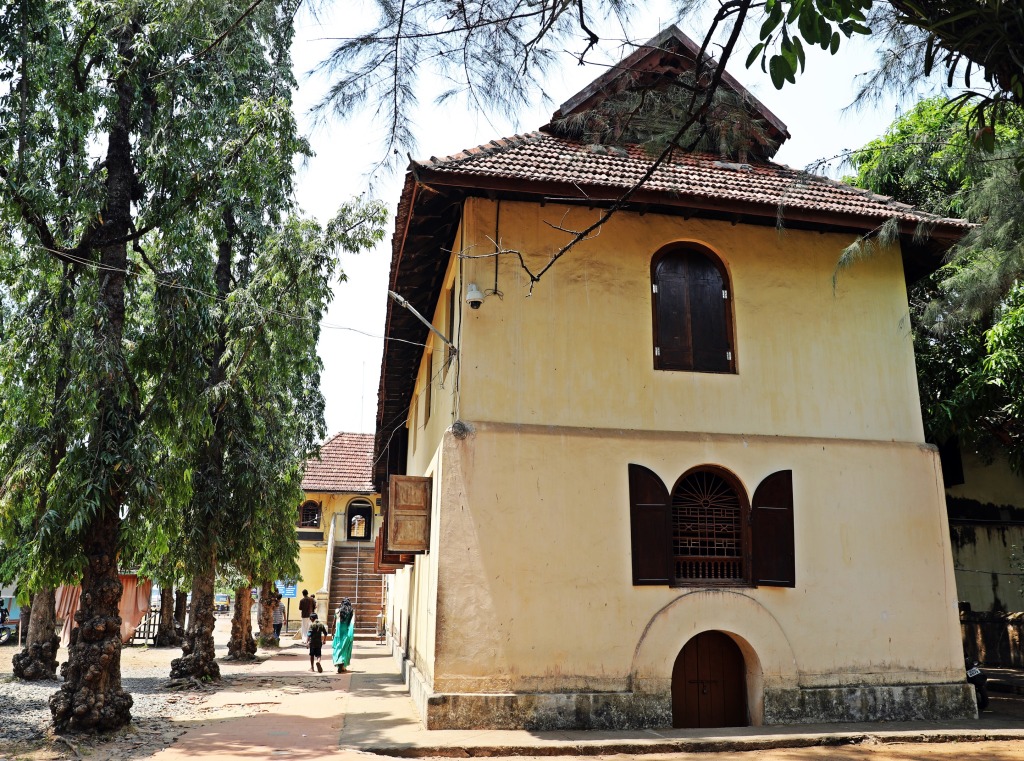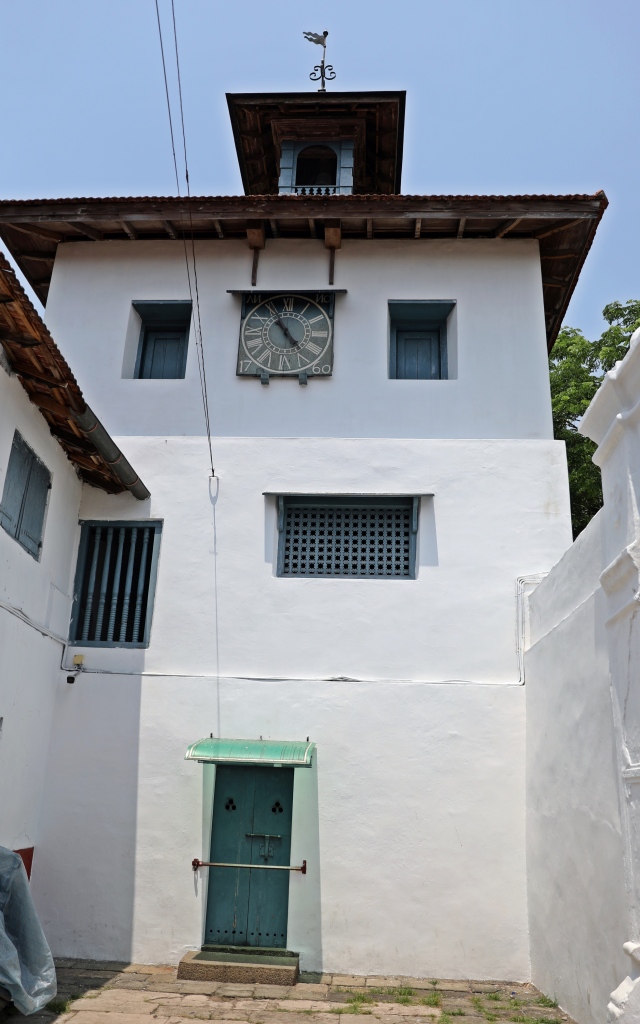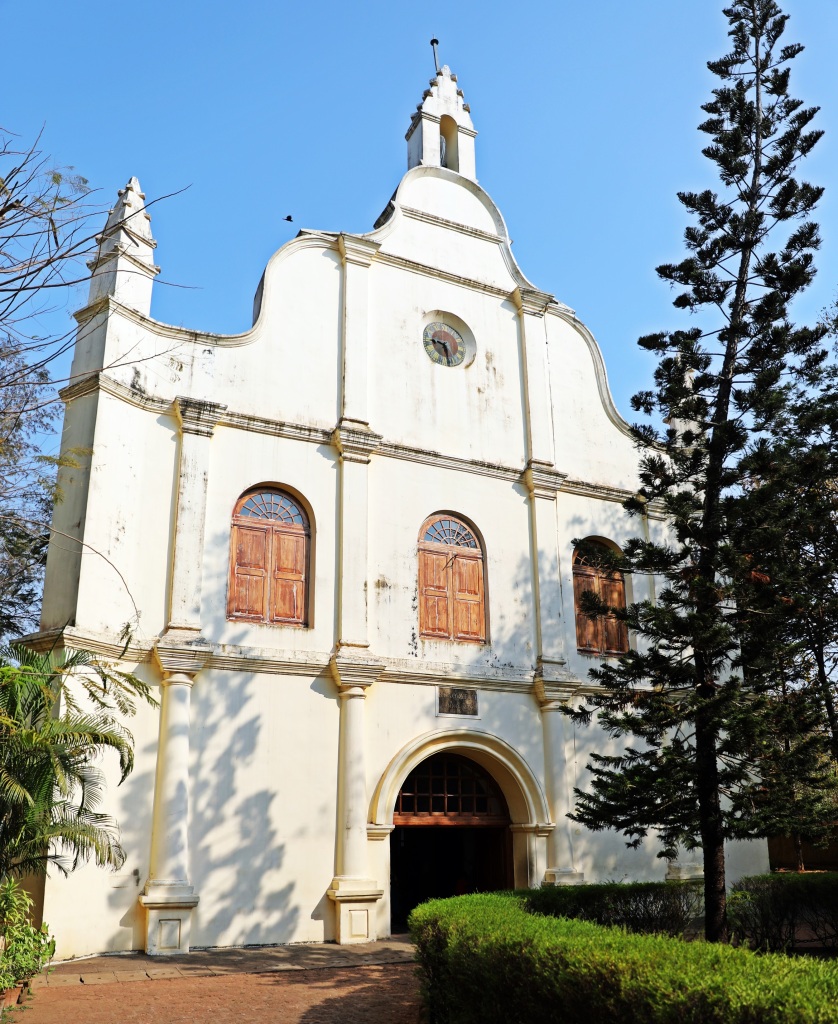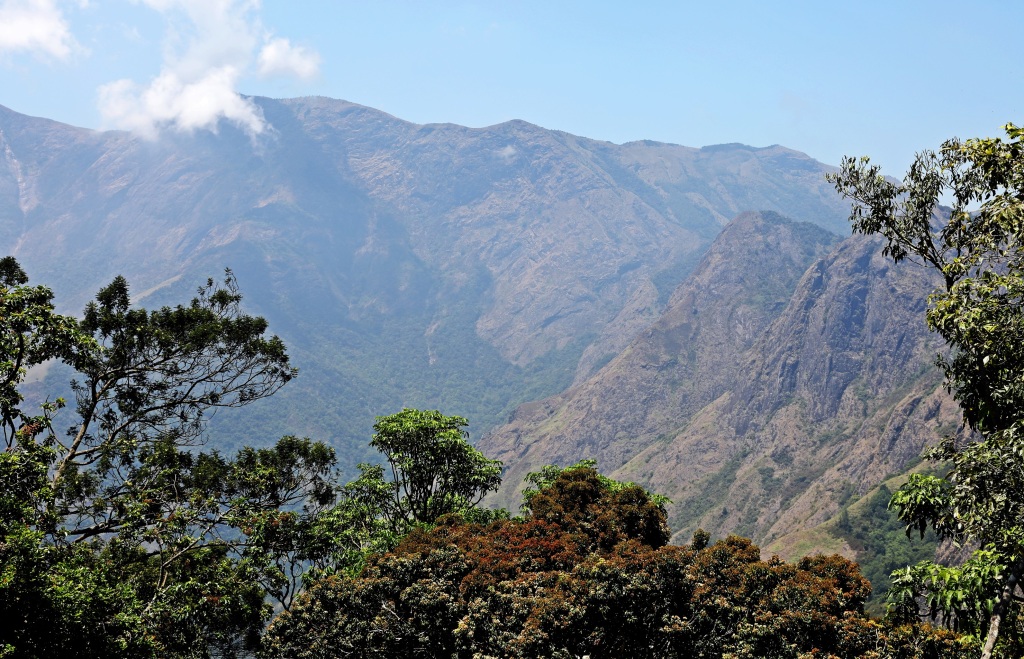The state of Kerala has many sides. First we visited the backwaters of Kerala where life is simple along the brackish canals. Up the coast and in-land from the backwaters, the views are quite different. From the historical sites of the spice-trade city Kochi to breathtaking views in the highlands, there was still a lot to see in this charming state.
Kerala has been an important part in the world’s spice trade for centuries. Kochi (formerly Cochin) was one of the most important trading posts for the valuable spices grown in the region. Arabs, British, Chinese, Dutch and Portuguese all have left their indelible mark on the sites and food of Kochi. In 1498, the famous Portuguese explorer Vasco da Gama landed on the Indian coast just north of Kochi. This made him the first European to arrive in India via the ocean and the first to round the Cape of Good Hope and Cape Agulhas at the southern edge of Africa. His voyage opened up a valuable route for Portuguese traders, allowing them unopposed access to India’s spices. In 1503 Fort Cochin became the first European colony in India. The Portuguese built the fort on a large island just off mainland, but today not much of the fort is left. There are however, many buildings from this time, and Fort Cochin is a great place to wander. There are many narrow, winding streets lined with renovated heritage buildings that are now shops, restaurants and boutique hotels. There are many great coffee shops and western restaurants in this area. It was a nice break for us from local Indian food as we find we need something familiar every once in a while.
The streets in Old Town seem to wander aimlessly but somehow all lead to the busy waterfront. We went to the waterfront at sunset when the shore was buzzing with locals and tourists getting an ice-cream, buying trinkets in the market or just walking along the shore. This is where we found remnants of the Chinese traders. Chinese Fishing Nets are large fishing nets on wooden frames that are manually raised and lowered in to the sea. They are still actively used today and are very picturesque. You can buy a fish from the fishermen and have it cooked next door at a food stall.

Colonial house, Kochi 
Fort Cochin, Kochi 
Grinding coffee beans, Kochi 
Old Town, Kochi 
Chinese Fishing Nets, Kochi 
Chinese Fishing Nets at sunset, Kochi
On the other side of this small island we walked through the fragrant spice market. It was a place that Maggie had been eagerly awaiting and it didn’t disappoint. There were many shops selling fresh cinnamon, cumin, chili and black pepper, cardamom, turmeric and mixed curries. The spices made these shops very colourful and aromatic.
Nearby is the 16th century Mattancherry Palace. The Portuguese gave the palace to the Cochin Raja in order to secure their exclusive trade privileges. It’s quite a plain palace considering other architecture we’ve seen in India. Next door to the palace is the old Paradesi Synagogue. It also has a plain exterior, but the inside is more extravagant with at least a dozen large, crystal chandeliers. No cameras were allowed inside.

Spice Market, Kochi 
Spice market, Kochi 
Spice market, Kochi 
Mattancherry Palace, Kochi 
Pardesi Synagogue, Kochi
As we drove through Kochi, we saw many more churches than in most Indian cities. 18% of Keralites are Christian which seems low, but not when you consider that Christianity makes up only 2% of religions in all of India. Two old churches in Fort Cochin, St Francis and Santa Cruz, are among the oldest. St Francis was the 1st European church in India. It was built by the Portuguese in 1504. The original church was a wooden structure, but was rebuilt in stone a decade later. The church has a simple white front with a gabled roof line. The explorer Vasco da Gama died in Kochi and was originally buried in St. Francis. His grave marker, along with other early Portuguese, are inside the old St. Francis church. Santa Cruz Basilica is a large white, Gothic church with tall spires and arched doorways. The original church, built by the Portuguese, was destroyed by the British. The current church was re-built in 1800s by the British. It was proclaimed as a Basilica by Pope John Paul II in the 1980s.

St. Francis Church, Kochi 
Vasco da Gama’s memorial and a burial plaque inside St. Francis Church, Kochi 
Vasco da Gama’s burial plaque inside St. Francis Church, Kochi 
Burial plaques inside St. Francis Church, Kochi 
Santa Cruz Basilica, Kochi 
Orthodox Catholic Church, Kochi
Kerala is well known for its traditional plays, called Kathakali. The actors have elaborate makeup and use facial expressions, eye movements and hand gestures to tell their story rather than words. Before the play began, the actors gave a demonstration of these expressions. It helped not only to understand the play, but also to appreciate the skill of the actors. The play we saw was about love, hate, rape and revenge. It was accompanied by musicians and a singer. It was a great evening.

Bihma demonstrating facial expressions and hand gestures play, Kochi 
The evil Kichaka Kathakali play, Kochi 
Malini refusing the evil Kichaka’s advances, Kathakali play, Kochi 
Malini and Bihma discussing the evil Kichaka, Kathakali play, Kochi 
The evil Kichaka Kathakali play, Kochi 
The vengeful murder of Kichaka, Kathakali play, Kochi
The Western Ghats is a 1,600 km long mountain range running parallel to the Arabian Sea with its southern end in Kerala. The town of Munnar is in the middle of the region’s important tea country. We had such a great time in the amazing Sri Lankan Highlands that we weren’t sure we should even visit. But, as we found, the Western Ghats’ Highlands have their own beauty. The valleys are wide, the hills are large, and the land is covered in green tea plantations for as far as you can see. The tall, rocky mountains of the Western Ghats add a lovely backdrop. We spent a day driving through the hills to see the spectacular landscape. There were tea plantations on every hill, making the area very green and beautiful. We were lucky to see two wild elephants between the tea trees on one plantation.

Tea Plantation, Munnar 
Tea Plantation, Munnar 
Tea Plantation, Munnar 
Tea Plantation, Munnar 
Near Munnar, Kerala 
Two wild elephants, Munnar 
Tea Plantations, Munnar 
Tea Plantation, Munnar 
Tea Plantations and the Western Ghats, Munnar 
Western Ghats behind a church, Kerala 
Western Ghats, Kerala 
Western Ghats, Kerala
There were many lovely vistas with mountain lakes and rivers below the high, rocky peaks. Some were artificial lakes made by dams, but others were natural mountain lakes. There are many small forests in the areas where plantations can’t be built. We saw large trees close to the road that had wild honeybee hives. There were more than 10 hives on one tree, but we couldn’t see any on the neighboring trees, we’re not sure why they liked this one so much. Just outside of town we visited a botanical garden. Since it’s the end of dry season, there weren’t many flowers blooming, but we did see a few interesting looking plants. On a hike up the hills above the town of Munnar we more lovely views of tea plantations and rocky mountains. The town of Munnar doesn’t have much to offer, but it is set in gorgeous country.

Mountain lake in the Western Ghats, Kerala 
Tea Plantations and Western Ghats, Munnar 
Vegetable gardens and Western Ghats, Kerala 
Wild Honey Bee Hives, Munnar 
Botanical Garden, Munnar 
Roses, Botanical Garden, Munnar 
Munnar, Kerala 
Munnar, Kerala 
Tea Plantations above Munnar 
Tea Plantations above Munnar 
Tea Plantations above Munnar
Coming up next: Mysore – The City of Palaces
For extra pics from this trip go to Gallery/WesterntIndia. For extra pictures from other blogs go to Gallery at monkeystale.ca
To read about more of our adventures go to Destinations.
If you like what you read, please comment or share it using the links below.
Lots of interesting facts in addition to the great photos; seems like you did a lot of research. I imagine that Mr. Devan is no longer performing Kathakali, but he was already not young when we saw him. (Watching him put on the make-up was almost as good as the show.)
LikeLike
Thank you! Watching the make-up application was really fun. I’m not sure who Mr Devan is so I doubt we saw him. Did he play the evil Kichaaka? The actor we saw was young but the Bihma character was very good.
LikeLike
Devan Gurukalum was the best-known dancer at that time and performed in his house. The picture on my post Southern India is of him. He only used traditional natural ingredients for his make-up. It was a while ago, so I don’t remember many details except that his performance was recommended as the best. At any rate, your photos show that the tradition is alive and young performers are continuing it excellently.
LikeLike
Wonderful reportage!!!!
LikeLiked by 1 person
Thank you!
LikeLiked by 1 person
This post is really interesting, as usual, and the photos are amazing
LikeLiked by 1 person
Thank you Luisa, Kerala is a unique and wonderful place. Maggie
LikeLiked by 1 person